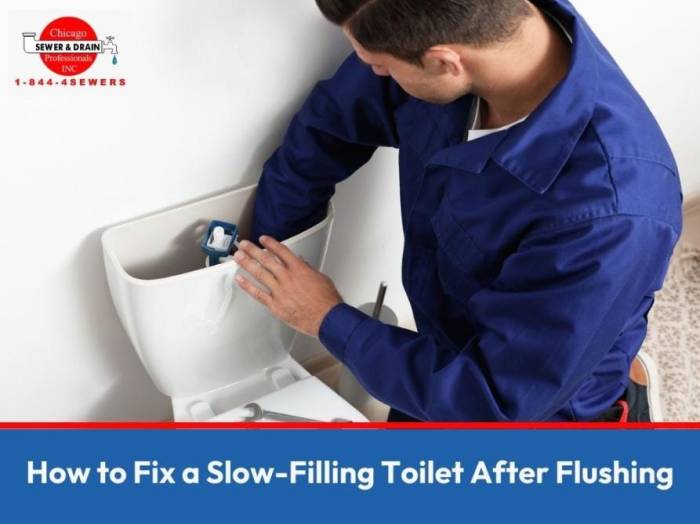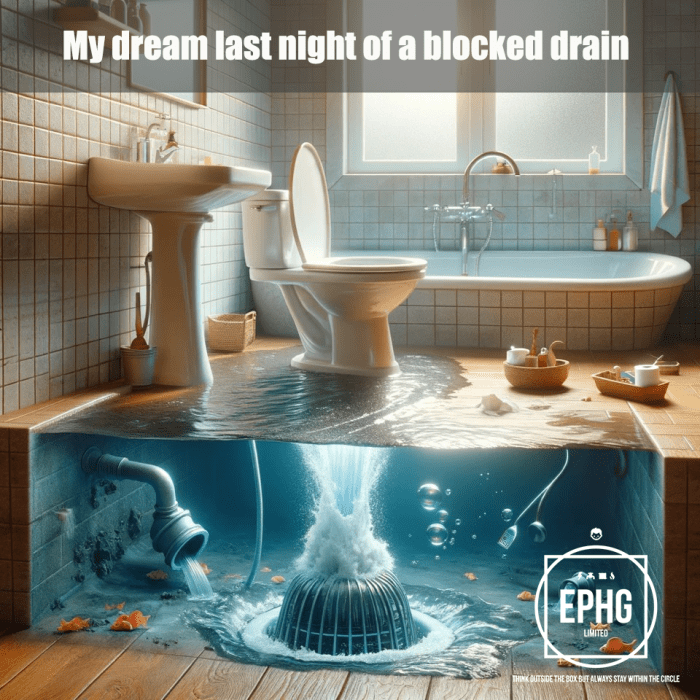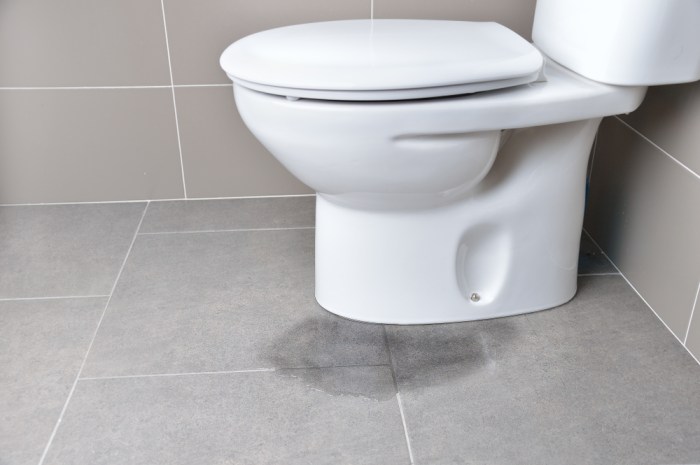Foundation Drainage Contractors Expert Solutions
Foundation drainage contractors are essential for maintaining the structural integrity of homes and buildings. They address critical issues related to water buildup around foundations, preventing costly repairs and potential structural damage. Their expertise encompasses a range of services, from identifying drainage problems to installing and maintaining sophisticated drainage systems. Understanding the importance of proper drainage is crucial for homeowners and property owners alike.
This guide provides a comprehensive overview of foundation drainage contractors, encompassing their services, the identification of problems, contractor selection, installation and maintenance procedures, case studies, and legal considerations. We will explore various drainage systems and materials, comparing their advantages, disadvantages, and costs. The goal is to empower readers with the knowledge to make informed decisions when dealing with foundation drainage issues.
Introduction to Foundation Drainage Contractors
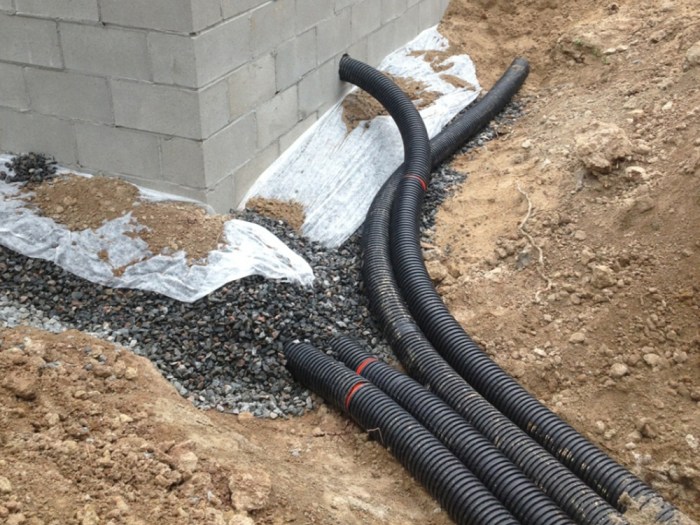
Source: littlehartconstruction.ca
Foundation drainage contractors are specialists in the design, installation, and maintenance of systems that prevent water from damaging building foundations. Their expertise ensures the longevity and structural integrity of homes and commercial properties. Proper drainage is critical to a building’s stability and overall health.
These professionals handle a range of tasks, from assessing existing drainage systems to designing and implementing new ones, using a variety of materials and techniques. Their work is essential in mitigating risks associated with water accumulation around foundations.
Definition of Foundation Drainage Contractors
Foundation drainage contractors are licensed professionals who design, install, and maintain systems to divert water away from building foundations. They assess the unique drainage needs of each project, employing various techniques to prevent water damage.
Services Offered by Foundation Drainage Contractors
Foundation drainage contractors provide a wide range of services, including: inspecting existing drainage systems, designing custom drainage solutions, installing various drainage materials (like gravel, pipes, and French drains), and maintaining existing drainage infrastructure. This proactive approach helps to avoid costly repairs and structural damage later on.
Importance of Proper Foundation Drainage
Proper foundation drainage is paramount for protecting buildings from water damage. Water accumulation around foundations can lead to significant structural issues, including foundation cracks, settling, and mold growth. This preventative maintenance safeguards the building’s structural integrity and increases its lifespan.
Common Problems Related to Inadequate Foundation Drainage
Inadequate foundation drainage can lead to several problems, such as: foundation cracks, basement flooding, uneven settling of the building, and the growth of mold and mildew. These issues can significantly impact the structural integrity and overall value of the property. For example, a homeowner might experience water seeping into the basement during heavy rainfall, leading to costly repairs and structural damage.
Examples of Different Foundation Drainage Systems
Various foundation drainage systems are employed depending on the specific site conditions and the needs of the structure. Common systems include: gravel drainage, pipe drainage, and French drains. These systems work to collect and redirect water away from the foundation, preventing water damage.
Comparison of Different Drainage Materials
| Material | Advantages | Disadvantages | Cost |
|---|---|---|---|
| Gravel | Relatively inexpensive, readily available, and effective for simple drainage needs. | Can be prone to clogging over time, requires regular maintenance, and may not be suitable for areas with high water tables. | Low |
| Pipe | Durable, effective in channeling water, and less prone to clogging compared to gravel. Offers greater flexibility in routing water flow. | Can be more expensive than gravel, and installation can be more complex. | Medium |
| French Drain | Highly effective at diverting water away from the foundation, ideal for areas with high water tables, and can be customized to suit specific needs. | Installation can be more involved and labor-intensive, making it more expensive than other options. | High |
Identifying Needs and Assessing Problems
Foundation drainage issues can manifest subtly, leading to costly repairs if not addressed promptly. Identifying the signs and understanding the underlying causes are crucial for effective preventative measures and efficient solutions. A thorough assessment of the severity of the problem is essential to determine the appropriate course of action.
Recognizing Signs of Foundation Drainage Issues
Visual indicators and observable patterns often provide clues about underlying drainage problems. Careful observation of the property can reveal subtle yet significant signs. For instance, moisture stains on walls, or a persistent dampness around the foundation are early warning signs.
Methods for Assessing Severity, Foundation drainage contractors
Assessing the severity of foundation drainage problems involves a combination of visual inspection, moisture testing, and potentially, professional evaluation. A visual inspection can identify the extent of water damage, the presence of cracks, and any signs of settlement. Moisture testing, using tools like moisture meters, can quantify the amount of moisture present in the soil and building materials, providing concrete data for analysis. Professional evaluation might be required for complex cases, using advanced techniques to accurately determine the extent of the issue.
Visual Indicators of Drainage Problems
Several visual indicators can signal foundation drainage problems. Water stains or discoloration on interior walls, particularly around windows or basement areas, often point to moisture intrusion. Cracks or bulges in the foundation walls are strong indicators of pressure from water. Uneven settling of the foundation, manifested by doors or windows sticking, or gaps appearing around fixtures, can also suggest underlying drainage issues. Furthermore, standing water or puddles near the foundation, or pooling of water in the yard after heavy rain, are clear indications of drainage problems.
Common Causes of Foundation Drainage Issues
Foundation drainage problems often stem from inadequate or failing drainage systems. These issues can be a result of poor initial design, blocked or clogged drains, or simply aging and deterioration of the existing drainage infrastructure. Furthermore, improper grading around the foundation, allowing water to pool against the structure, can be a significant contributing factor. Similarly, changes in the surrounding landscape, such as the addition of new structures or altered drainage patterns, can disrupt existing systems.
Different Types of Drainage Problems and Their Symptoms
| Problem Type | Symptoms | Potential Causes |
|---|---|---|
| Water Damage | Water stains on walls, musty odor, mold growth, sagging ceilings, softened or rotting wood, interior or exterior foundation damage | Inadequate downspouts, clogged gutters, poor grading around the foundation, blocked drainage pipes, leaking pipes, or a combination of factors |
| Cracks | Vertical, horizontal, or diagonal cracks in foundation walls, walls, or floors, widening or lengthening of existing cracks, uneven settlement | Water pressure against the foundation, soil movement, improper foundation construction, or shifting soil conditions |
| Settlement | Doors and windows sticking, gaps appearing around fixtures, uneven floors, cracked or bulging walls, sloping floors, and tilting walls | Inadequate soil compaction, poor foundation design, presence of expansive soils, settling of adjacent structures, or poor drainage around the foundation |
Contractor Selection and Evaluation
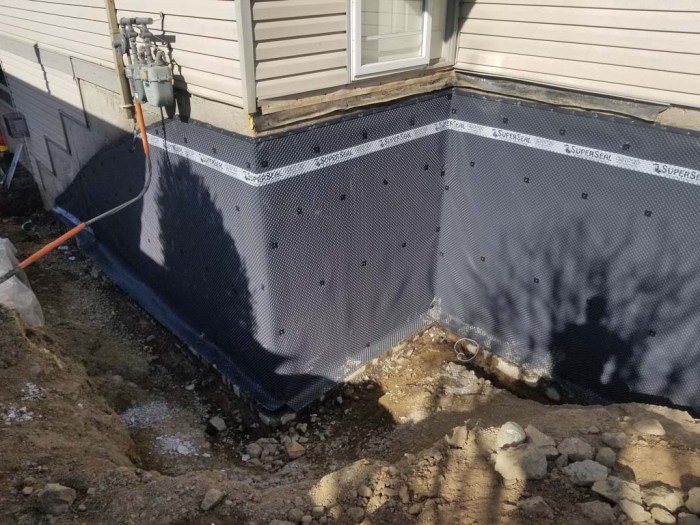
Source: riverstoneexcavating.com
Choosing the right foundation drainage contractor is crucial for a successful and lasting solution. A poorly selected contractor can lead to ineffective drainage, costly repairs, and potentially further damage to your property. Thorough research and careful evaluation are essential steps in this process.
Factors to Consider When Choosing a Contractor
Selecting a foundation drainage contractor involves considering several key factors. Reputable contractors demonstrate a strong understanding of drainage systems, including different materials and installation techniques. Their experience with similar projects in your area provides valuable insight into potential challenges and solutions. Insurance coverage is a critical element, ensuring financial protection in case of accidents or unforeseen circumstances. Finally, strong communication skills and a commitment to customer satisfaction are vital for a positive working relationship throughout the project.
Questions to Ask Potential Contractors
A comprehensive list of questions can significantly aid in evaluating potential contractors. Inquire about their experience with various drainage systems, particularly those relevant to your property’s conditions. Request references from previous clients, allowing you to gauge the contractor’s reliability and workmanship. Verify their licensing and insurance status to ensure legal compliance and financial security. Understanding their payment procedures and warranties is crucial for transparency and protection.
Evaluating Contractor Qualifications and Experience
Assessing a contractor’s qualifications and experience is essential. Verify their licensing and insurance to ensure legal compliance and financial protection. Look for certifications relevant to foundation drainage, which demonstrate specialized knowledge and adherence to industry standards. Reviewing a contractor’s portfolio, including photos and descriptions of past projects, provides insights into their abilities and past performance. Contacting previous clients to gather firsthand accounts of their experience can offer valuable perspectives.
Comparing Pricing Structures for Foundation Drainage Services
Pricing structures for foundation drainage services can vary significantly. Some contractors offer a fixed price for a complete project, providing clarity and predictability. Others may use an hourly rate or a per-unit pricing system, depending on the scope of work. It’s crucial to obtain detailed proposals from multiple contractors to compare costs and services. A thorough understanding of the quoted costs, including materials, labor, and any additional fees, is essential. A contractor who provides a clear and detailed breakdown of their pricing structure is more trustworthy.
Common Contractor Services and Typical Costs
| Service | Description | Estimated Cost |
|---|---|---|
| Installation | The initial setup of a foundation drainage system, including the trenching, pipe installation, and connection to the drainage system. | $2,000 – $10,000+ |
| Repair | Addressing existing drainage issues, such as clogged pipes or damaged components. This may involve replacement or repair of damaged pipes, or adding new drain tiles. | $500 – $5,000+ |
| Maintenance | Regular inspections and upkeep of the drainage system to prevent future problems. This may include cleaning or minor repairs to prevent major issues. | $100 – $500 per year |
Note: These are estimated costs and can vary greatly depending on the size of the project, complexity of the system, materials used, and local labor costs. Always obtain specific quotes from contractors for accurate pricing.
Installation and Maintenance Procedures
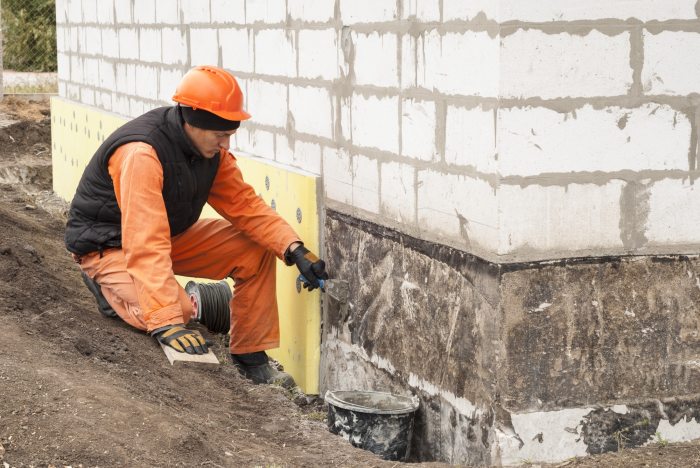
Source: crawlspacemedic.com
Proper installation and ongoing maintenance are critical for the longevity and effectiveness of a foundation drainage system. Neglecting these aspects can lead to costly repairs and potential damage to your home’s structure. This section details the steps involved in installing a system, emphasizing the importance of correct procedures, and Artikels common maintenance practices.
Installation Steps for a Foundation Drainage System
Careful installation is paramount to a system’s performance. A well-executed installation ensures efficient water management and prevents future issues. The precise steps vary depending on the specific system and local conditions, but general procedures remain consistent.
- Excavation and Trenching: Carefully excavate trenches around the foundation, ensuring proper depth and width to accommodate the drainage components. This step involves precise measurements to ensure the system fits the foundation and surrounding ground.
- Pipe Installation: Lay the drainage pipe in the trench, ensuring it slopes gently away from the foundation. The slope is critical for proper water flow. Use gravel bedding and backfill to provide adequate support and drainage around the pipe.
- French Drain Installation (Example): A French drain typically involves a perforated pipe embedded in a layer of gravel. This setup allows water to seep into the pipe and be diverted away from the structure. The gravel layer needs to be adequately sized and compacted to avoid clogging.
- Connecting to the Drainage System: Connect the drainage pipe to the existing drainage system, such as a downspout or a sump pump, if applicable. Ensure proper connections to prevent leaks and maintain the integrity of the system.
- Backfilling and Compaction: Carefully backfill the trench, ensuring no obstructions or voids exist around the drainage pipe. Proper compaction prevents settling and maintains the integrity of the drainage system.
- Testing the System: After backfilling, test the system by simulating rain conditions or pouring water directly onto the foundation. Verify that water drains effectively away from the foundation.
Importance of Proper Installation Techniques
Proper installation techniques are essential for the long-term success of a foundation drainage system. Errors in installation can lead to ineffective drainage, increased water buildup around the foundation, and even structural damage. Adhering to established procedures minimizes these risks.
- Accurate Grading: Ensuring proper grading and slope is critical for effective water flow away from the structure. A steep enough slope prevents water pooling.
- Appropriate Pipe Material: Using appropriate pipe material and fittings guarantees the system’s durability and longevity. Material selection should account for soil conditions and potential chemical reactions.
- Proper Gravel Bedding: Gravel bedding provides necessary drainage and support around the pipe, preventing clogging. The type and depth of gravel are crucial for effective water channeling.
Common Maintenance Procedures
Regular maintenance is key to preserving the effectiveness of a foundation drainage system. A well-maintained system significantly reduces the risk of water damage and structural issues. Consistent upkeep prevents costly repairs.
- Inspecting for Clogs: Regular inspections for clogs in the drainage system are essential. Clogs can impede water flow, leading to moisture buildup around the foundation. Clearing clogs promptly prevents problems.
- Checking for Leaks: Thoroughly inspecting for leaks in the drainage pipes, connections, and other components is vital. Early detection and repair of leaks prevent water damage.
- Cleaning Downspouts and Gutters: Cleaning gutters and downspouts ensures proper water diversion from the foundation. Regular cleaning prevents debris buildup, which can lead to clogs and drainage issues.
Preventive Maintenance Strategies
Proactive measures can prevent future problems with the drainage system. Implementing these preventive strategies extends the system’s lifespan and reduces the risk of costly repairs.
- Regular Inspections: Schedule regular inspections to identify potential issues early on. This allows for timely repairs and prevents minor problems from escalating into major ones.
- Clearing Debris Regularly: Regularly clearing debris from the drainage area, including leaves, twigs, and other organic matter, prevents clogs and maintains proper drainage.
- Protecting from Root Intrusion: Taking measures to prevent root intrusion into the drainage system is crucial. Root intrusion can cause blockages, hindering water flow and potentially damaging the pipe.
Troubleshooting Common Drainage System Issues
Identifying and addressing drainage problems promptly is essential. This section Artikels steps for diagnosing and resolving common issues.
- Water Standing Around the Foundation: Water standing around the foundation indicates potential drainage issues. Possible causes include clogged pipes, inadequate slope, or improper installation. Troubleshooting involves inspecting for clogs, checking the slope, and evaluating the system’s connections.
- Slow Drainage: Slow drainage can result from clogged pipes or insufficient gravel bedding. Addressing these issues typically involves clearing clogs and ensuring proper gravel support for the pipes.
- System Leaks: Leaks in the system can cause water damage and structural problems. Finding and repairing leaks promptly prevents further damage.
Step-by-Step Guide for Installing a French Drain System
This guide provides a detailed sequence for installing a French drain system.
- Excavation: Dig a trench around the foundation, ensuring the appropriate depth and width.
- Gravel Layer: Place a layer of gravel in the trench.
- Pipe Placement: Lay the perforated drainage pipe on top of the gravel, ensuring the correct slope.
- Gravel Bedding: Cover the pipe with more gravel, ensuring proper coverage and drainage.
- Backfilling: Backfill the trench with soil, ensuring proper compaction.
- Testing: Test the system for proper drainage.
Case Studies and Examples
Foundation drainage projects, like any complex undertaking, benefit greatly from real-world examples. Analyzing successful and less successful projects offers valuable insights into best practices, problem-solving strategies, and the importance of meticulous documentation. These case studies demonstrate the diverse range of challenges and solutions encountered in the field, ultimately aiding in the development of effective strategies for future projects.
Understanding the nuances of different drainage solutions and the varying levels of success achieved through their implementation is crucial for contractors and clients alike. This section presents a selection of case studies, highlighting the problems, solutions, and results, offering practical guidance on achieving optimal drainage outcomes.
Successful Foundation Drainage Projects
Comprehensive documentation is critical in foundation drainage projects, serving as a reference for future work and a record of the project’s lifecycle. Well-maintained records provide detailed information on the procedures followed, materials used, and the overall performance of the drainage system. This meticulous approach helps ensure that issues are addressed promptly and effectively, preventing costly repairs or replacements in the future.
Examples of Contractor Approaches to Drainage Problems
Contractors employ various strategies to address specific drainage challenges. A thorough understanding of the unique characteristics of each project, such as soil type, water table fluctuations, and building design, is essential for selecting the most appropriate drainage solution. This section provides illustrative examples of how contractors handled specific drainage issues.
Importance of Proper Documentation in Foundation Drainage Projects
Thorough documentation is not just a best practice; it’s a necessity for successful foundation drainage projects. This includes detailed site surveys, material specifications, installation procedures, and ongoing maintenance records. Such records are invaluable for future reference, troubleshooting, and warranty claims.
Different Case Studies Focusing on Different Drainage Solutions
Different types of drainage solutions address different underlying problems. The selection of the optimal solution depends on the specific characteristics of the project, including the severity of the water infiltration, the soil conditions, and the budget constraints. The following table illustrates some different case studies:
| Case Study | Problem | Solution | Results |
|---|---|---|---|
| Case Study 1: High Water Table | High water table causing persistent moisture around foundation. | Installation of a French drain system coupled with a sump pump. | Successfully lowered the water table, eliminating moisture issues and preventing foundation damage. |
| Case Study 2: Poorly Drained Soil | Clay soil resulting in slow drainage and water pooling around the foundation. | Installation of gravel trench drains, combined with a drainage blanket. | Improved drainage significantly, reducing water pooling and preventing future moisture problems. |
| Case Study 3: Existing Drainage System Failure | Existing drainage system failed, leading to foundation cracks and structural issues. | Removal of the failed system and installation of a new French drain system, incorporating a geotextile layer. | Eliminated the source of water damage, repaired foundation cracks, and ensured long-term stability. |
Legal and Regulatory Considerations

Source: greendesignconstruct.com
Foundation drainage contractors must adhere to a complex web of building codes and regulations to ensure safe and compliant installations. These regulations, varying by jurisdiction, dictate aspects from the materials used to the inspection procedures, ultimately safeguarding both the property and the public. Understanding these regulations is critical for contractors to avoid costly legal issues and maintain a positive reputation.
Building Codes and Regulations
Building codes, established at local, state, and national levels, dictate the minimum standards for foundation drainage systems. These codes often address factors such as drainage pipe specifications, slope requirements, and the use of appropriate materials. Adherence to these standards is crucial to prevent issues like water damage, structural instability, and potential health hazards. Failure to comply can result in significant fines and project delays.
Importance of Permits and Inspections
Obtaining the necessary permits and undergoing required inspections is a vital part of the process. Permits provide official authorization to undertake work, ensuring that the project aligns with local regulations. Inspections, conducted throughout the installation process, verify compliance with codes and standards, and ensure the work is performed correctly. This proactive approach prevents future problems and ensures the final product meets safety and performance expectations.
Potential Legal Issues
Inadequate foundation drainage can lead to a range of legal issues, including property damage claims. If a poorly installed system leads to water damage to a neighbor’s property, the contractor could face legal action. Likewise, issues like structural damage caused by water infiltration can result in costly lawsuits and reputational harm. These consequences highlight the importance of meticulous planning and adherence to regulations.
Contractor Responsibilities Regarding Compliance
Contractors have a significant responsibility to understand and comply with relevant regulations. This includes staying informed about local building codes, ensuring their team is adequately trained, and meticulously documenting all aspects of the installation process. Detailed records of permit applications, inspection results, and material choices are essential for demonstrating compliance and mitigating potential legal risks. Contracts should clearly Artikel the contractor’s obligations in terms of compliance.
Comparison of Regulations Across Geographic Areas
Regulations concerning foundation drainage vary substantially across different geographic areas. Local ordinances, influenced by factors like climate, soil conditions, and local building practices, can create significant differences. For example, areas with high rainfall might have more stringent requirements for drainage capacity than arid regions. Contractors operating in multiple jurisdictions need to be well-versed in the specific regulations for each area. A contractor operating across different geographic areas should develop a system for researching and documenting local regulations to maintain compliance. This often involves a significant investment in time and resources. A detailed understanding of the various regulations is essential to avoid costly mistakes and ensure compliance in all locations.
Conclusion
In conclusion, working with foundation drainage contractors is a proactive approach to safeguarding your property’s value and longevity. Proper drainage systems prevent water damage, cracks, and costly repairs. By understanding the various aspects of drainage systems, from materials to installation procedures, homeowners can make well-informed decisions. This comprehensive guide has highlighted the importance of proper assessment, contractor selection, and maintenance, ultimately ensuring the structural health of your home or building. Remember, proactive measures are often more cost-effective than reactive repairs.

